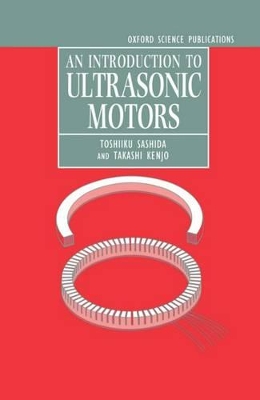Monographs in Electrical and Electronic Engineering
2 primary works
Book 28
An Introduction to Ultrasonic Motors
by Toshiiku Sashida and Takashi Kenjo
Published 2 December 1993
The ultrasonic motor, invented in 1980, utilizes the piezoelectric effect in the ultrasonic frequency range to provide the motive force. (In conventional electric motors the motive force is electromagnetic). The result is a motor with unusually good low-speed high-torque and power-to-weight characteristics. It has already found applications in camera autofocus mechanisms, medical equipment subject to high magnetic fields, and motorized car accessories. Its
applications will increase as designers become more familiar with its unique characteristics.
This book is the result of a collaboration between the inventor and an expert in conventional electric motors: the result is an introduction to the general theory presented in a way that links it to conventional motor theory. It will be invaluable both to motor designers and to those who design with and use electric motors as an introduction to this important new invention.
applications will increase as designers become more familiar with its unique characteristics.
This book is the result of a collaboration between the inventor and an expert in conventional electric motors: the result is an introduction to the general theory presented in a way that links it to conventional motor theory. It will be invaluable both to motor designers and to those who design with and use electric motors as an introduction to this important new invention.
Book 34
Richly illustrated, this book covers all aspects of stepping motors including basic theory; principles of design, construction, and application; torque production mechanism; dynamic characteristics; driving techniques with and without a microprocessor; and applications in factory and office automation systems. "The clarity of the presentation reflects Kenjo's mastery of this field. His frequent use of diagrams and photographs of actual equipment further helps convey the basic technical concepts....The extensive use of stepping motors in computer disk systems and in printers and printing terminals makes this a most timely and useful reference....Recommended."--Choice

